Abstract
Active human carbonic anhydrase II (HCAII) protein was expressed in the cyanobacterium Synechococcus PCC7942 by means of transformation with the bidirectional expression vector, pCA. This expression was driven by the bacterial Tac promoter and was regulated by the IacIQ repressor protein, which was expressed from the same plasmid. Expression levels reached values of around 0.3% of total cell protein and this protein appeared to be entirely soluble in nature and located within the cytosol of the cell. The expression of this protein has dramatic effects on the photosynthetic physiology of the cell. Induction of expression of carbonic anhydrase (CA) activity in both high dissolved inorganic carbon (Ci) and low Ci grown cells leads the creation of a high Ci requiring phenotype causing: (a) a dramatic increase in the K0.5 (Ci) for photosynthesis, (b) a loss of the ability to accumulate internal Ci, and (c) a decrease in the lag between the initial Ci accumulation following illumination and the efflux of CO2 from the cells. In addition, the effects of the expressed CA can largely be reversed by the carbonic anhydrase inhibitor ethoxyzolamide. As a result of the above findings, it is concluded that the CO2 concentrating mechanism in Synechococcus PCC7942 is largely dependent on (a) the absence of CA activity from the cytosol, and (b) the specific localization of CA activity in the carboxysome. A theoretical model of photosynthesis and Ci accumulation is developed in which the carboxysome plays a central role as both the site of CO2 generation from HCO3− and a resistance barrier to CO2 efflux from the cell. There is good qualitative agreement between this model and the measured physiological effects of expressed cytosolic CA in Synechococcus cells.
Full text
PDF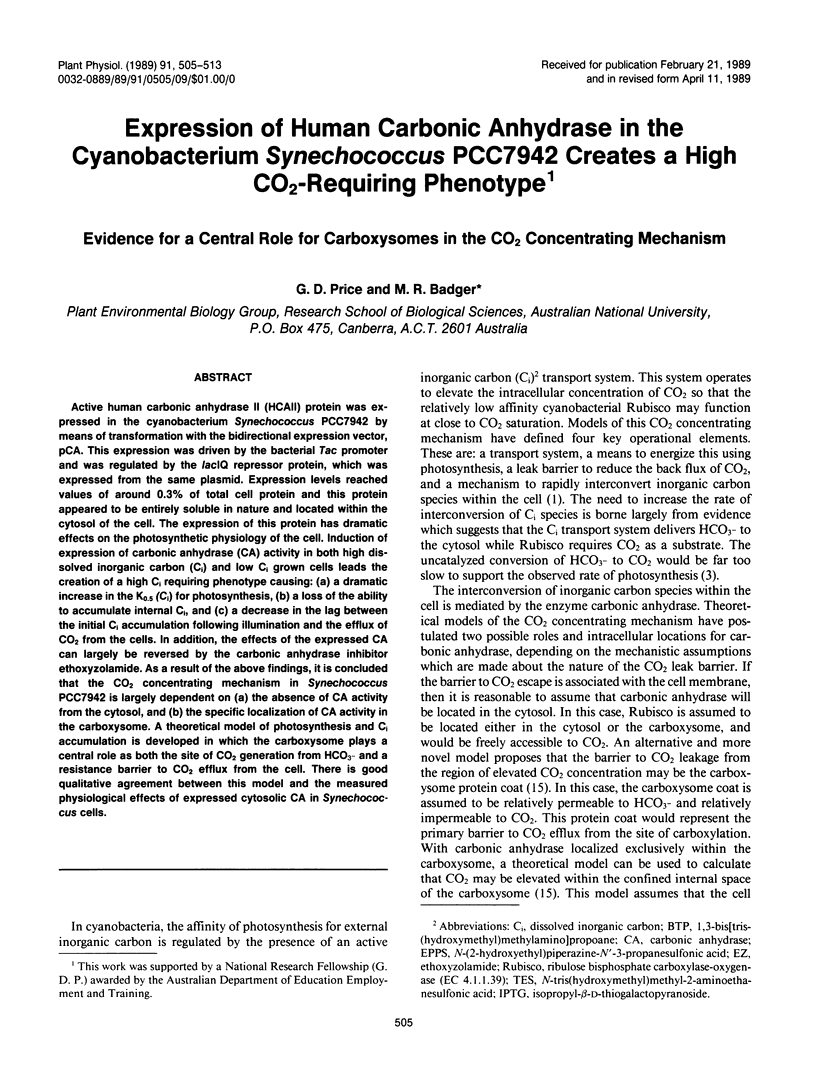
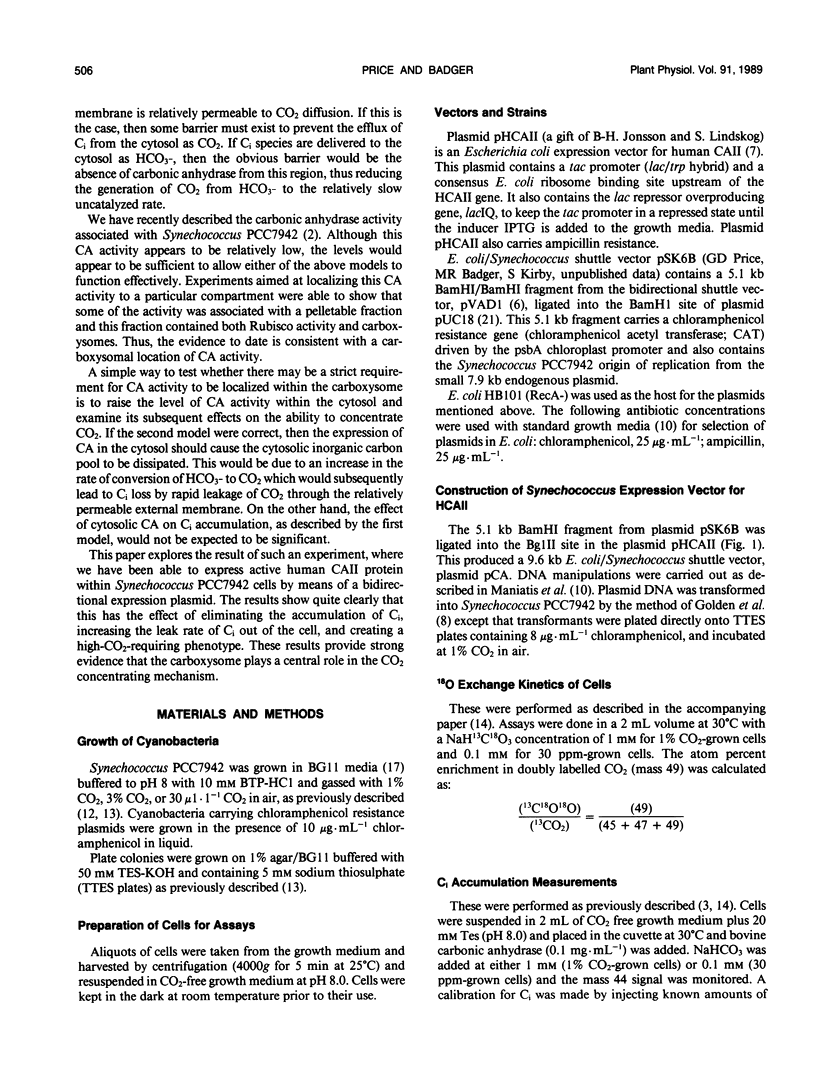
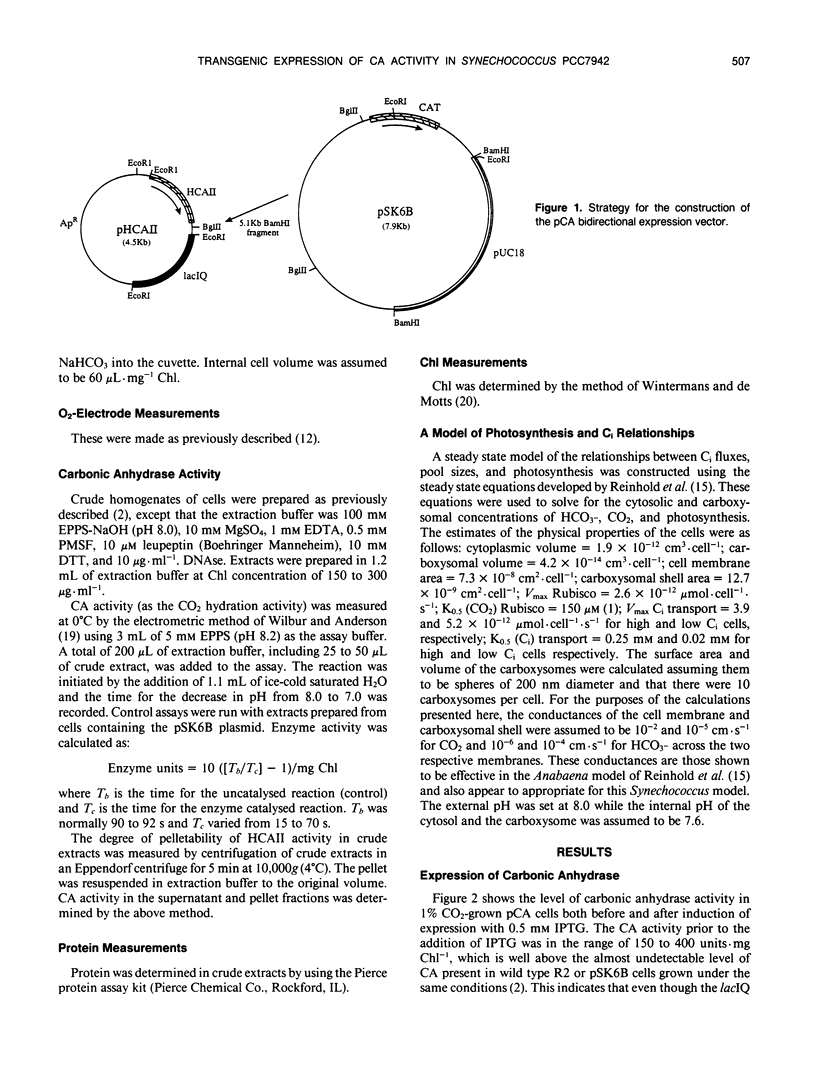
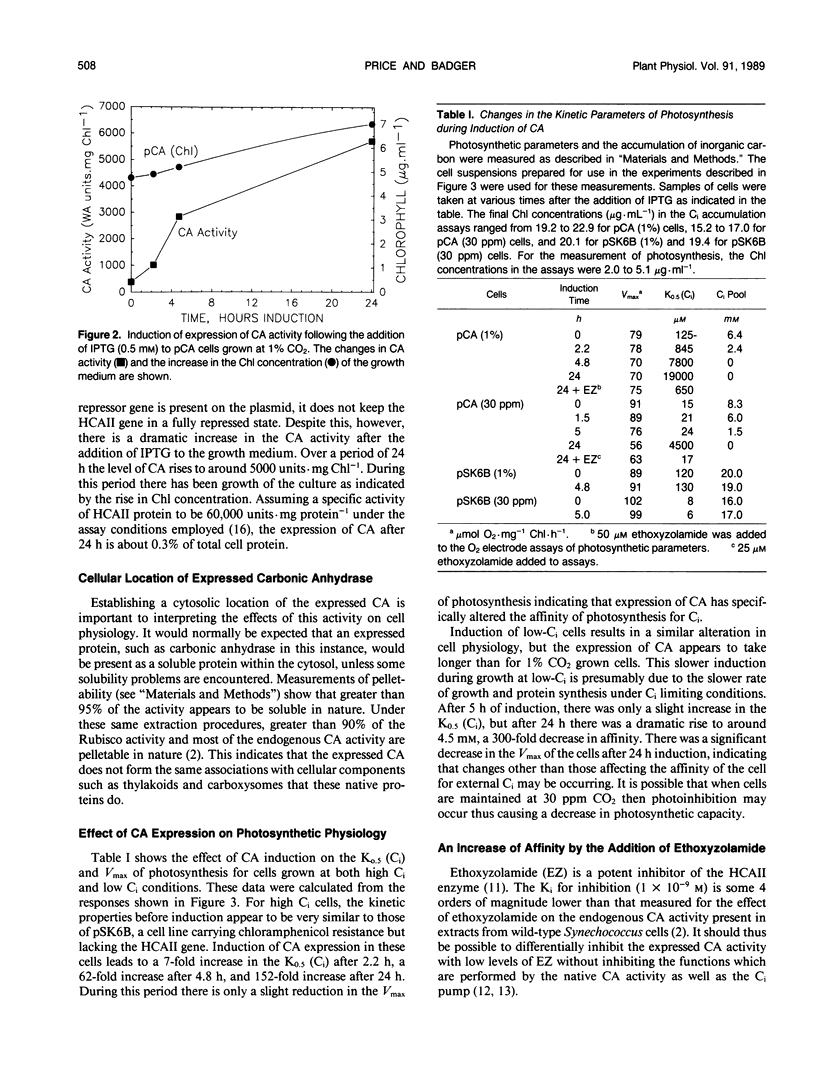
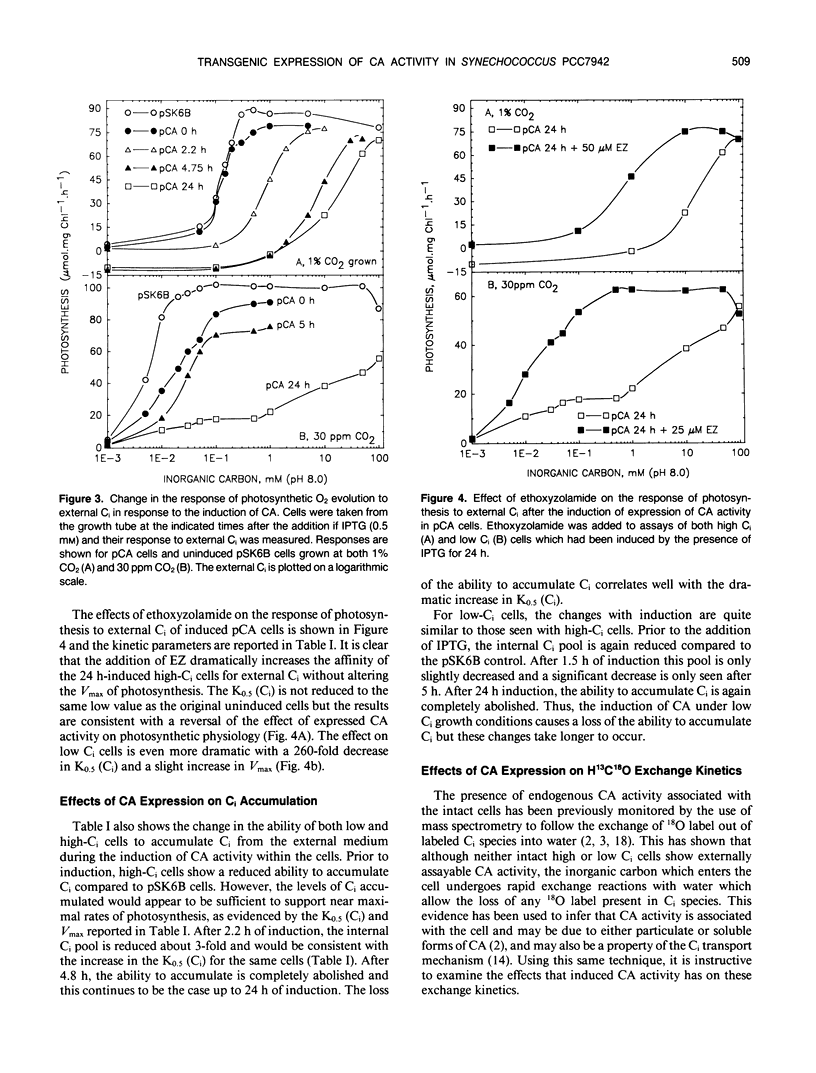
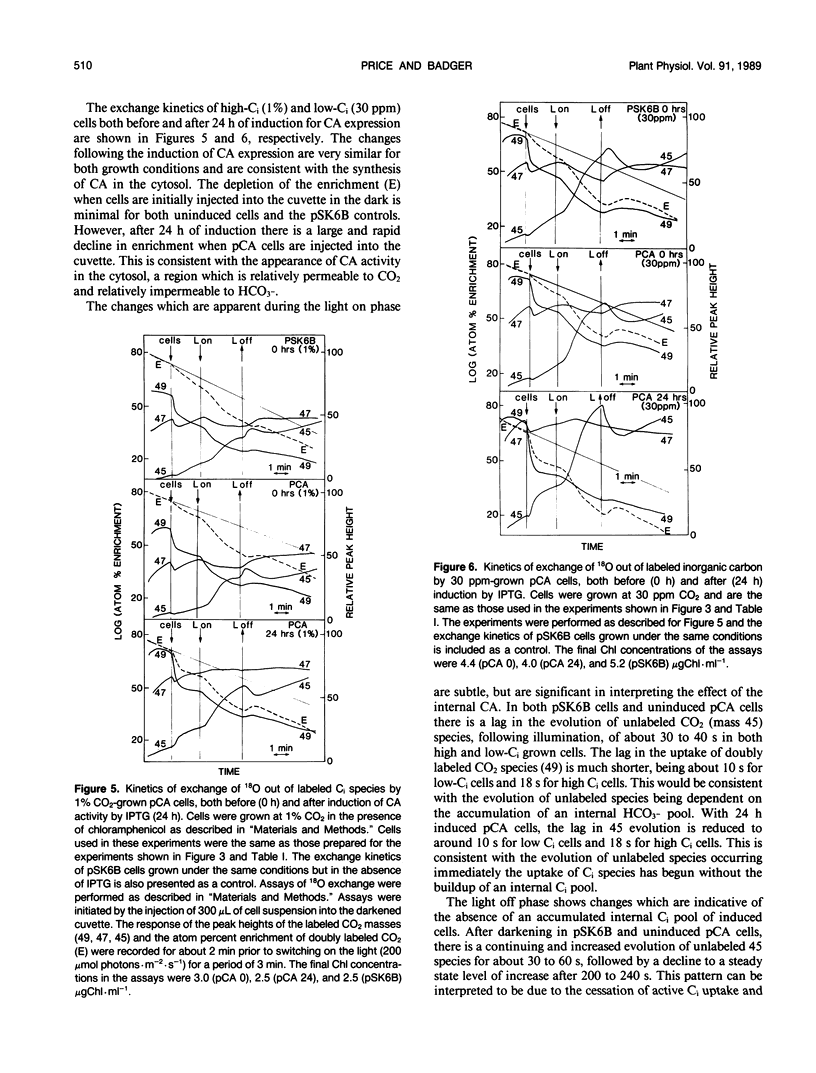
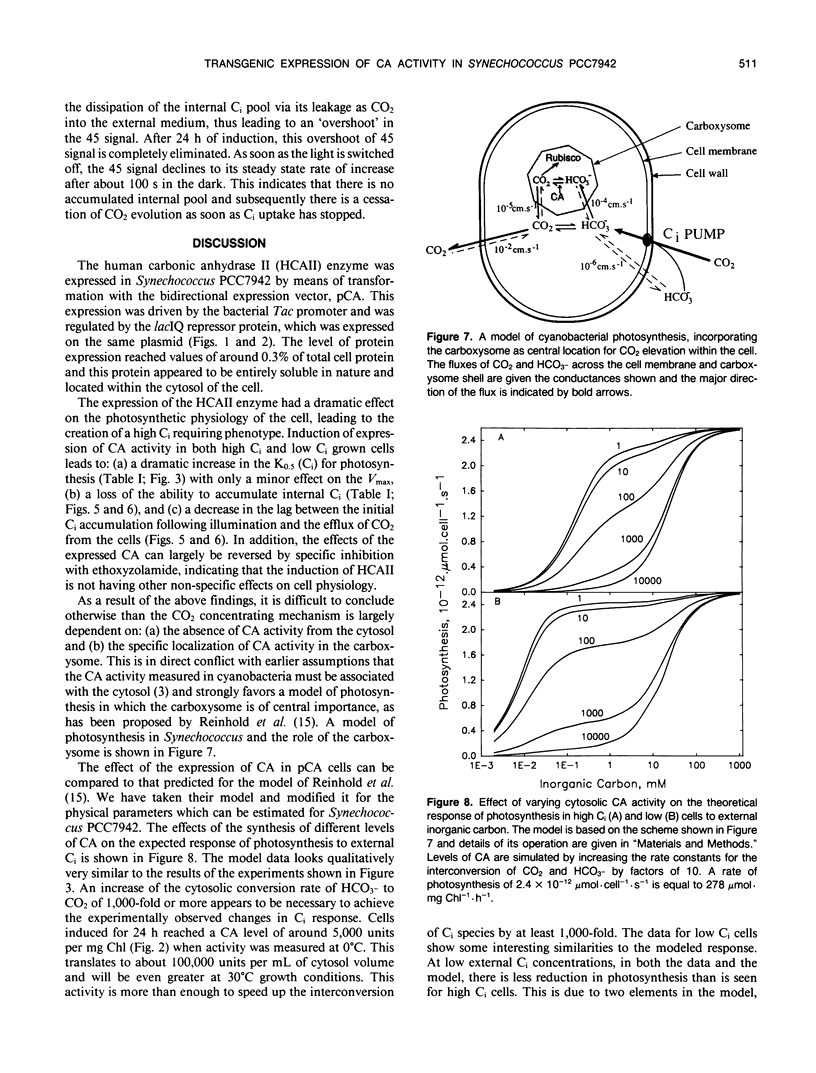
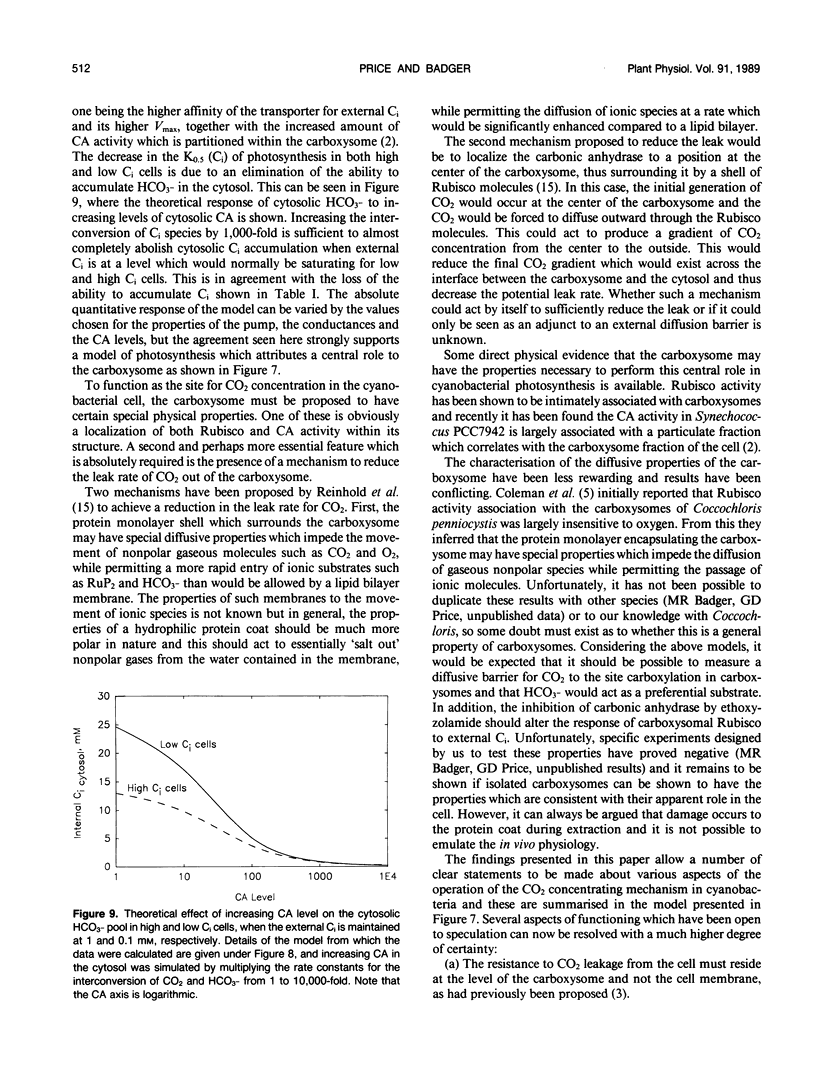
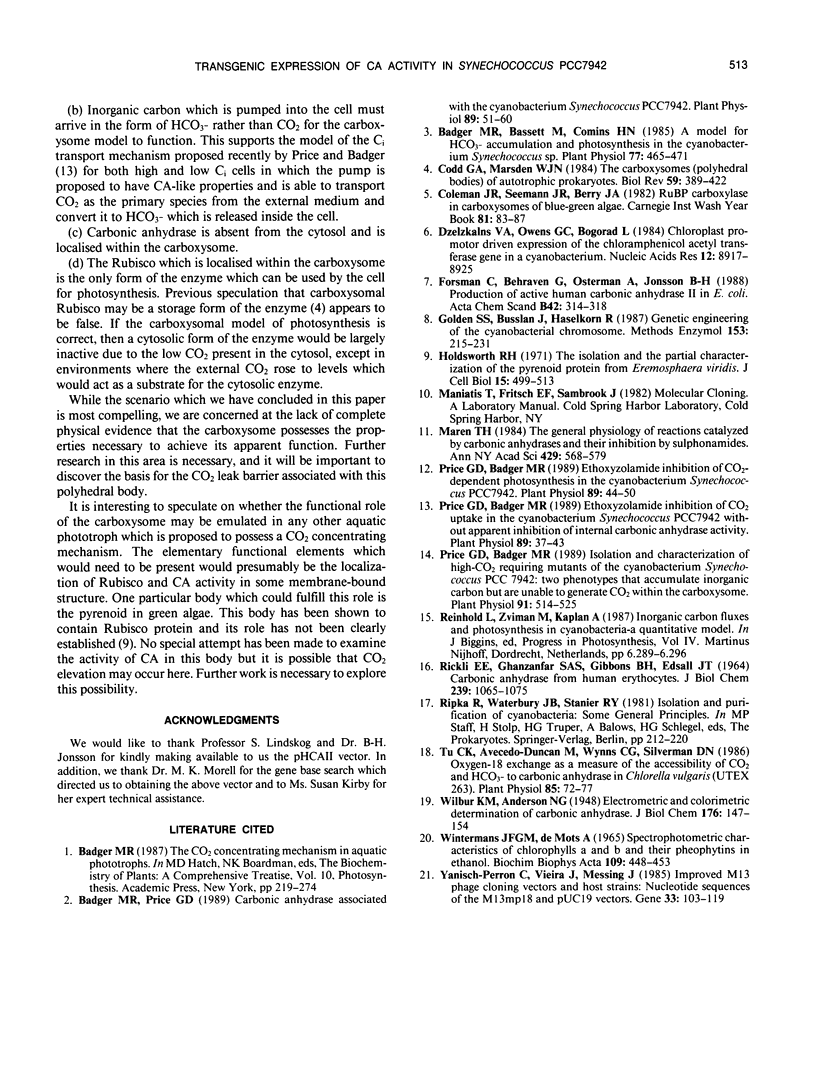
Images in this article
Selected References
These references are in PubMed. This may not be the complete list of references from this article.
- Badger M. R., Bassett M., Comins H. N. A Model for HCO(3) Accumulation and Photosynthesis in the Cyanobacterium Synechococcus sp: Theoretical Predictions and Experimental Observations. Plant Physiol. 1985 Feb;77(2):465–471. doi: 10.1104/pp.77.2.465. [DOI] [PMC free article] [PubMed] [Google Scholar]
- Badger M. R., Price G. D. Carbonic Anhydrase Activity Associated with the Cyanobacterium Synechococcus PCC7942. Plant Physiol. 1989 Jan;89(1):51–60. doi: 10.1104/pp.89.1.51. [DOI] [PMC free article] [PubMed] [Google Scholar]
- Dzelzkalns V. A., Owens G. C., Bogorad L. Chloroplast promoter driven expression of the chloramphenicol acetyl transferase gene in a cyanobacterium. Nucleic Acids Res. 1984 Dec 11;12(23):8917–8925. doi: 10.1093/nar/12.23.8917. [DOI] [PMC free article] [PubMed] [Google Scholar]
- Forsman C., Behravan G., Osterman A., Jonsson B. H. Production of active human carbonic anhydrase II in E. coli. Acta Chem Scand B. 1988 May;42(5):314–318. doi: 10.3891/acta.chem.scand.42b-0314. [DOI] [PubMed] [Google Scholar]
- Golden S. S., Brusslan J., Haselkorn R. Genetic engineering of the cyanobacterial chromosome. Methods Enzymol. 1987;153:215–231. doi: 10.1016/0076-6879(87)53055-5. [DOI] [PubMed] [Google Scholar]
- Holdsworth R. H. The isolation and partial characterization of the pyrenoid protein of Eremosphaera viridis. J Cell Biol. 1971 Nov;51(21):499–513. doi: 10.1083/jcb.51.2.499. [DOI] [PMC free article] [PubMed] [Google Scholar]
- Maren T. H. The general physiology of reactions catalyzed by carbonic anhydrase and their inhibition by sulfonamides. Ann N Y Acad Sci. 1984;429:568–579. doi: 10.1111/j.1749-6632.1984.tb12389.x. [DOI] [PubMed] [Google Scholar]
- Price G. D., Badger M. R. Ethoxyzolamide Inhibition of CO(2) Uptake in the Cyanobacterium Synechococcus PCC7942 without Apparent Inhibition of Internal Carbonic Anhydrase Activity. Plant Physiol. 1989 Jan;89(1):37–43. doi: 10.1104/pp.89.1.37. [DOI] [PMC free article] [PubMed] [Google Scholar]
- Price G. D., Badger M. R. Ethoxyzolamide Inhibition of CO(2)-Dependent Photosynthesis in the Cyanobacterium Synechococcus PCC7942. Plant Physiol. 1989 Jan;89(1):44–50. doi: 10.1104/pp.89.1.44. [DOI] [PMC free article] [PubMed] [Google Scholar]
- Price G. D., Badger M. R. Isolation and Characterization of High CO(2)-Requiring-Mutants of the Cyanobacterium Synechococcus PCC7942 : Two Phenotypes that Accumulate Inorganic Carbon but Are Apparently Unable to Generate CO(2) within the Carboxysome. Plant Physiol. 1989 Oct;91(2):514–525. doi: 10.1104/pp.91.2.514. [DOI] [PMC free article] [PubMed] [Google Scholar]
- RICKLI E. E., GHAZANFAR S. A., GIBBONS B. H., EDSALL J. T. CARBONIC ANHYDRASES FROM HUMAN ERYTHROCYTES. PREPARATION AND PROPERTIES OF TWO ENZYMES. J Biol Chem. 1964 Apr;239:1065–1078. [PubMed] [Google Scholar]
- Tu C., Spiller H., Wynns G. C., Silverman D. N. Carbonic Anhydrase and the Uptake of Inorganic Carbon by Synechococcus sp. (UTEX-2380). Plant Physiol. 1987 Sep;85(1):72–77. doi: 10.1104/pp.85.1.72. [DOI] [PMC free article] [PubMed] [Google Scholar]
- Wintermans J. F., de Mots A. Spectrophotometric characteristics of chlorophylls a and b and their pheophytins in ethanol. Biochim Biophys Acta. 1965 Nov 29;109(2):448–453. doi: 10.1016/0926-6585(65)90170-6. [DOI] [PubMed] [Google Scholar]
- Yanisch-Perron C., Vieira J., Messing J. Improved M13 phage cloning vectors and host strains: nucleotide sequences of the M13mp18 and pUC19 vectors. Gene. 1985;33(1):103–119. doi: 10.1016/0378-1119(85)90120-9. [DOI] [PubMed] [Google Scholar]



